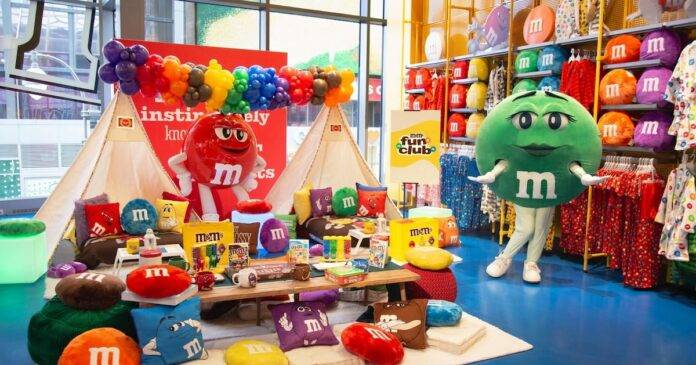Immersive candy experiences are revolutionizing the confectionery industry, providing consumers with bold, sensory-driven interactions that not only reconnect brands with their loyal followers but also attract new customers. As events make their return, it is crucial for brands to explore innovative approaches to immersive experiences, according to Candace Huntly, the founder of Songbird Marketing. These playful and tech-powered activations are reshaping how consumers engage with sweet treats, offering a unique and memorable experience.
Tech integration is at the forefront of these immersive experiences, with chocolate and candy creators incorporating entertaining consumer interactions into their marketing strategies across various platforms. Whether online, in physical stores, or in the phygital realm (the blend of physical and digital worlds), brands are leveraging artificial intelligence (AI), virtual reality (VR), and augmented reality (AR) to create personalized and engaging experiences for consumers of all generations. Huntly emphasizes the importance of utilizing AR/VR to engage all senses and provide the best immersive candy experience possible.
Social media integration is another key aspect of immersive experiences in 2025, with a focus on creating “Instagrammable” moments that can be shared across platforms. Opulent and creative designs that capture attention on platforms like Instagram and TikTok, along with influencers showcasing confectionery products’ sensorial elements, are driving consumer engagement. Additionally, DIY confectionery opportunities that combine technical innovation with unexpected results are appealing to younger consumers, leading to the growth of trends like freeze-dried candy.
Contrary to popular belief, immersive experiences are not exclusive to big brands with substantial marketing budgets. Startups and emerging confectioners can still adapt to new trends and create engaging experiences that resonate with consumers. Huntly notes that the pandemic has shown that smaller-scale experiences can have the same impact as larger ones, emphasizing the importance of creating meaningful brand experiences that deliver on promises.
Immersive candy experiences are evolving beyond simply offering samples to shoppers. Brands are now focusing on providing a holistic and complete tasting and buying process, integrating candy into the overall experience. Huntly warns against going too big with immersive experiences, citing failed attempts like the Willy Wonka experience and the Bridgerton Ball. Instead, brands should focus on creating smaller, quirky pop-ups that offer a blend of online and offline interaction for better consumer engagement.
The ultimate goal of immersive experiences is to create lasting memories and stories that resonate with consumers, whether shared on social media or among friends. Huntly emphasizes the importance of tapping into emotions like nostalgia, whimsy, and innovation to create immersive experiences that leave a lasting impression. By understanding their target audience and creating experiences that evoke specific feelings, brands can create immersive candy experiences that stand out in a crowded market.
In conclusion, immersive candy experiences are redefining the confectionery industry, offering brands a unique opportunity to engage with consumers in a meaningful and memorable way. By incorporating technology, social media, and creative designs, brands can create immersive experiences that resonate with consumers of all ages. Whether big or small, brands can leverage immersive experiences to connect with their audience and drive brand loyalty in a competitive market.




